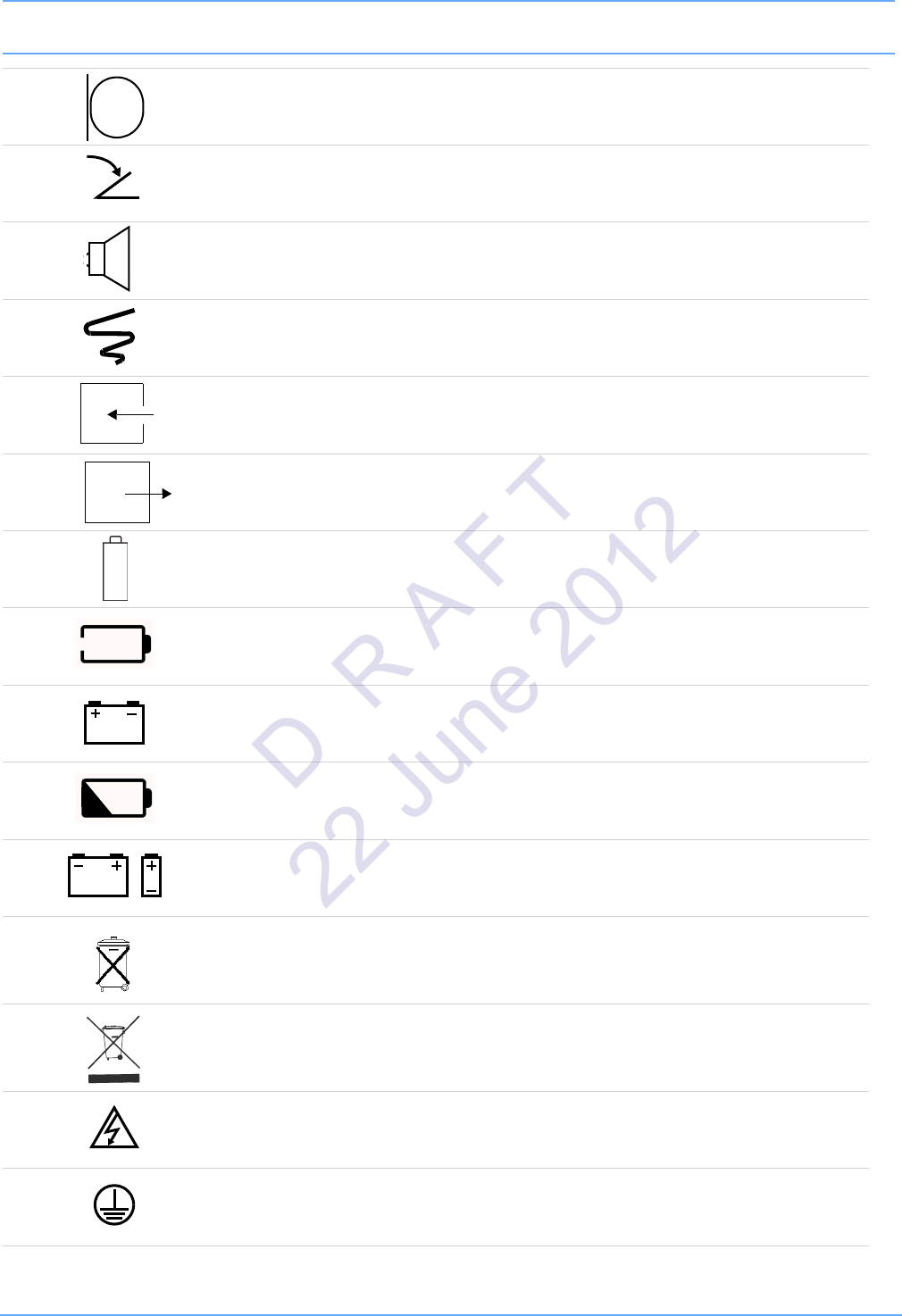User's Manual
Table Of Contents
- Telemetry Transmitter
- Table of Contents
- Conventions Used in This Manual 1-1
- Nurses 1-7
- Monitor Technicians 1-7
- Biomedical Engineers 1-7
- Physicians 1-7
- Patients 1-7
- Sources of Interference 1-8
- Potential Sources of Damage 1-8
- Optional Leadwire Grouper 2-3
- Leadwire Color Codes 2-4
- Telemetry Channel Label 2-5
- Adult Electrode Placement 3-3
- Lead Fault Indication 3-4
- Noise Detection 3-4
- False Alarms 3-5
- Traditional Pulse Oximetry 3-5
- Electrodes, Leadwires, Sensors, and Sensor Cables 3-7
- Electrodes, Leadwires, Sensors and Sensor Cables 3-8
- Spacelabs Healthcare Technology 3-13
- Additional Information for Telemetry Products 3-13
- Telemetry 3-13
- Heart Rate Averaging 3-13
- Spacelabs Healthcare SpO2 Sensors 3-18
- Additional Information 3-18
- Transmitter Batteries 4-1
- Host Monitors 4-2
- Telemetry Receiver Module 4-2
- Assigning a Telemetry Channel 4-3
- Top, Front and Bottom View (96281-C) 4-4
- Rear View (96281-C) 4-5
- Front View (96281-A) 4-6
- Battery Compartment (96281-A, 96281-B, 96281-C) 4-7
- ECG 4-12
- SpO2 4-14
- Cleaning/Disinfecting 5-1
- Recommended Cleaning Solutions 5-2
- Basic Cleaning and Low-level Disinfection 5-3
- Cleaning ECG Leadwires 5-3
- Cleaning Buttons 5-3
- Cleaning the Battery Cover 5-3
- Table 1—Electromagnetic Emmissions A-1
- Table 2—Electromagnetic Immunity A-2
- Table 2—Electromagnetic Immunity (continued) A-3
- Table 3—Separation Distances A-4
- Introduction
- About the Transmitters
- ECG and SpO2
- ECG Overview
- Patient Preparation and Electrode Application
- To Set Up ECG Monitoring
- ECG Problem Solving
- SpO2 Overview
- Warnings and Cautions for SpO2
- Setting Up SpO2 Monitoring
- Ensuring Accurate SpO2 Monitoring
- SpO2 and Pulse Rate Specifications
- Using the Sensorwatch Feature
- Enabling and Adjusting Alarms
- Data Averaging
- Display Details at the Host Monitor
- Printing SpO2 Waveforms
- SpO2 Messages at the Host Monitor
- Sensors
- SpO2 Alarm Delays
- SpO2 Troubleshooting Guide
- Basic Operations
- Getting Started
- Basic Components
- Selecting Options for Leads
- Basic User Actions
- Basic Modes of Operation
- View Mode
- Status Messages at the Host Monitor
- Telemetry Transmitter with ECG Only Troubleshooting Guide
- Telemetry Transmitter with Display Troubleshooting Guide
- Telemetry Transmitter with Display and SpO2 Troubleshooting Guide
- Cleaning, Disinfecting, and Sterilization
- Appendix A — Guidance and Manufacturer’s Declaration
- Appendix B — Symbols

Appendix B — Symbols
Telemetry Transmitter (96281) Operations Manual B-8
Microphone
Foot Switch
Audio Output, Speaker
Event
Gas Sampling Port
Gas Return Port
Battery
Replace only with the appropriate battery.
Battery Status
Battery
Replace only with the appropriate battery.
Low Battery
Replace only with the appropriate battery.
(+ / - signs may be reversed)
All batteries should be disposed of properly to protect the environment. Lithium batteries
should be fully discharged before disposal. Batteries such as lead-acid (Pb) and nickel-
cadmium (Ni-Cd) must be recycled. Please follow your internal procedures and or local
(provincial) laws regarding disposal or recycling.
This symbol indicates that the waste of electrical and electronic equipment must not be
disposed as unsorted municipal waste and must be collected separately. Please contact
an authorized representative of the manufacturer for information concerning the
decommissioning of your equipment.
Caution - hazardous voltages. To reduce risk of electric shock, do not remove the cover or
back. Refer servicing to a qualified field service engineer (U.S.A.).
DANGER - High Voltage (International)
Protective Earth Ground
D R A F T
22 June 2012










